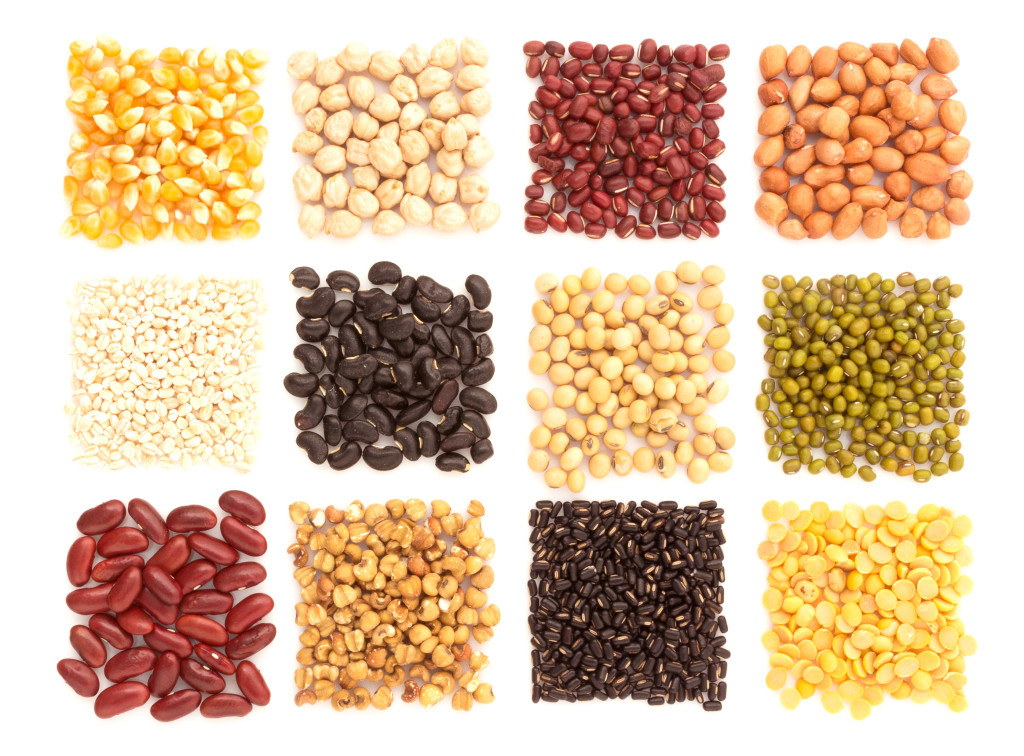
Image purchased from Shutterstock.
With all of the buzz around pulses, you may have heard that 2016 is officially the international year of pulses (pulse farmers, vegetarians and vegans everywhere applaud)! You might however be wondering – what does this even mean? By declaring 2016 the international year of pulses, leaders in food production (like FAO) and health promotion (like Dietitians of Canada) will be placing pulses at the top of their agenda. AKA the major frontrunners in nutrition, agriculture, and food security are teaming up to promote and celebrate the nutritional, economical, and environmentally sustainable benefits that pulses have to offer. Let’s learn more.
WHAT THE HECK ARE PULSES?
We get this question all the time. Pulses are a part of the legume family (a plant whose fruit is enclosed in a pod); however the term “pulse” refers only to the dried seed. This includes a wide range of beans, peas, chickpeas, and lentils. You might also recognize them as those hard colourful little seeds lying in half empty bags in the back of your pantry that you probably had a plan for at one point. It’s time to resurrect that bag my friends. And, we’ll teach you how to use them too.


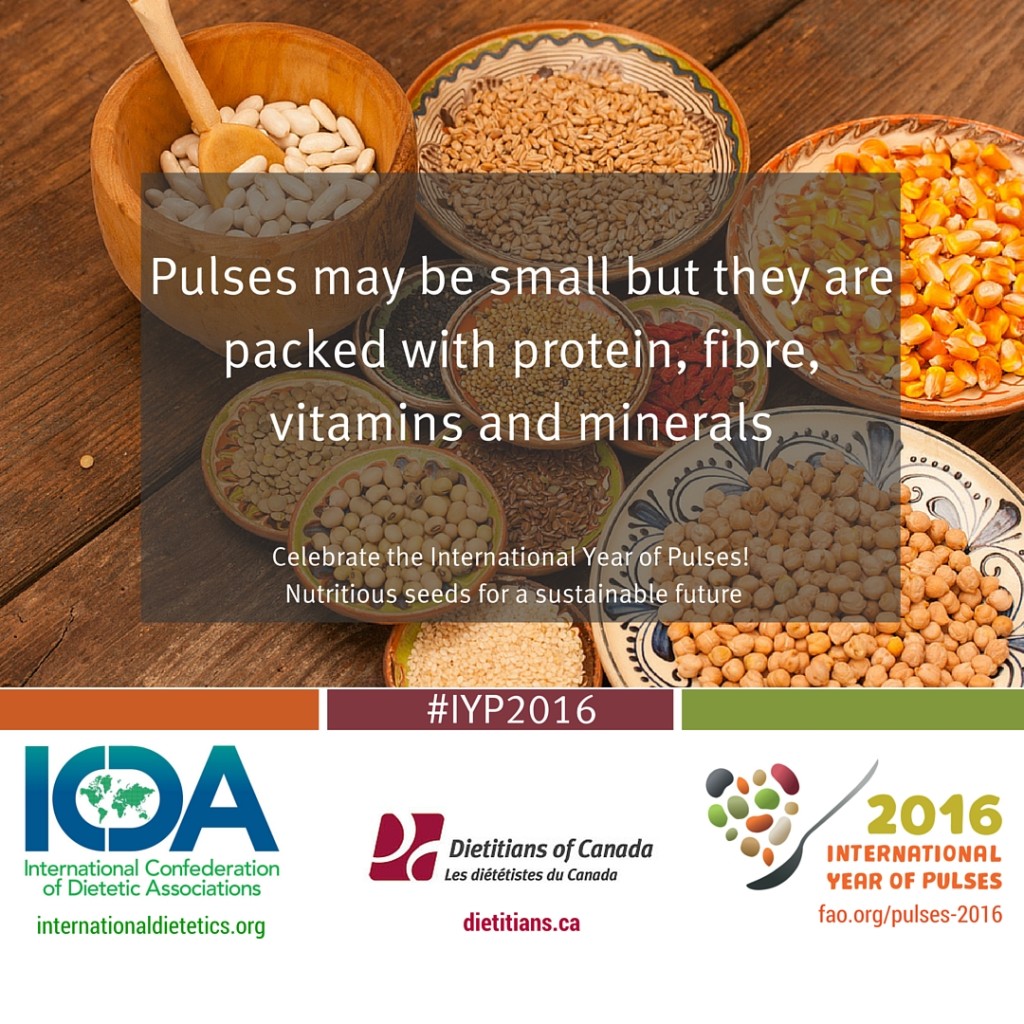
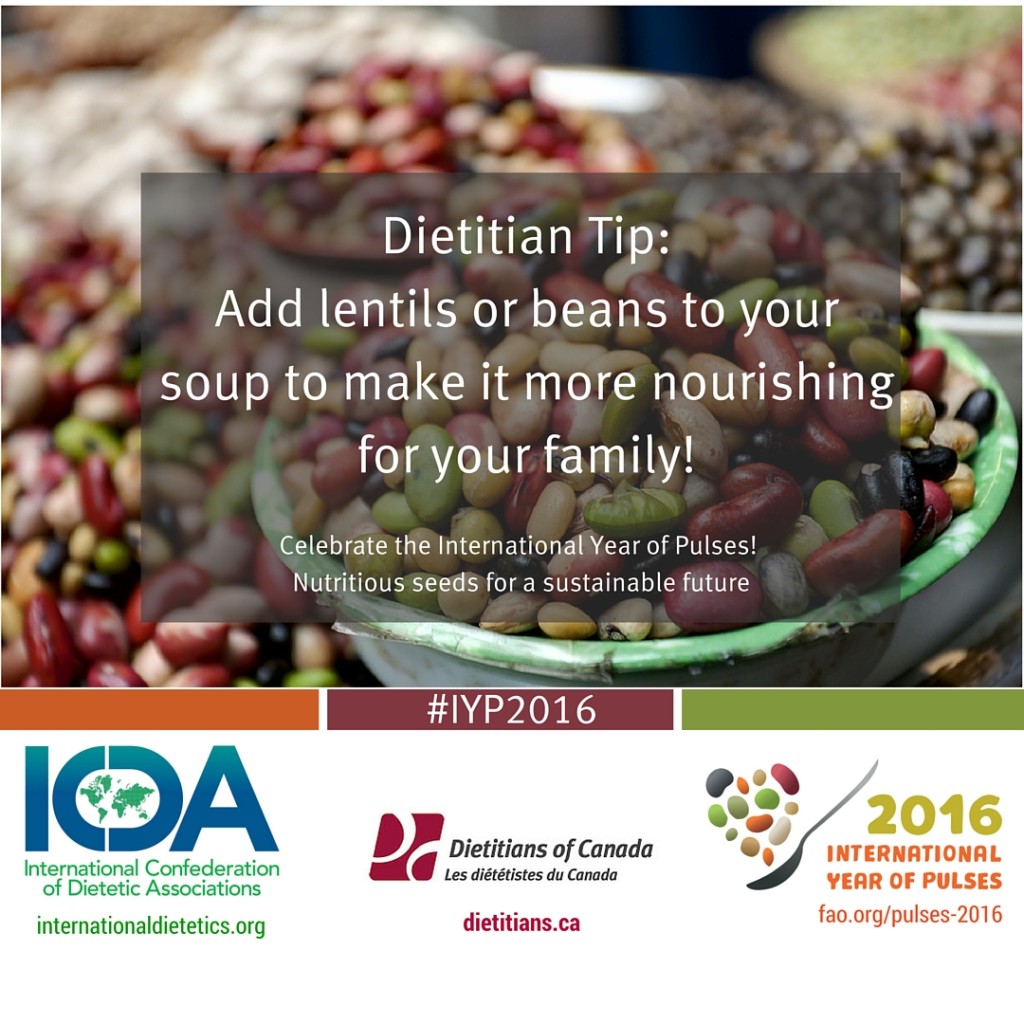
LET’S GET COOKING
What I love most about pulses is that they are versatile. Legit, they are like little chameleons when added into dishes. Pulses can be used in so many different menu items from side dishes to main courses to dessert (that’s right, DESSERT!). Pulses are fairly neutral in taste, therefore they are well equipped to take on a wide variety of flavour palates. This means they can be used for savoury items, like roasted butternut squash hummus , or chickpeas with roasted cumin masala, but they can also be transformed into super sweet desserts such as cookies, cakes, or brownies (stay tuned for an upcoming recipe).
Another great feature of pulses is that they are super filling because they come loaded with fibre and generally have a higher protein content than most other plant foods. If you’d rather ease your way into the world of pulses, a great way to begin is by replacing half of the ground beef or turkey in your favourite chili or soup recipe with a can of lentils, black beans, or kidney beans. Trust me, your wallet will thank you. Beef lovers, take note: the price of ground beef has gone up 41% over the past three years, rising from an average of $4.02/lb in April 2012 to $5.70/lb in April 2015. Yikes!
If you’re like me, and you’re constantly on the go, a great idea is to keep a few cans of your favourite beans or lentils in your kitchen cupboard that are ready to use on the fly. Remember to always drain off the liquid and rinse the product with cold water before use.
If you’ve got a little extra time to spare for prepping, you could opt to buy dried pulses and cook them yourself over the stove or in a crockpot. This method is a bit more time consuming than using canned pulses, however it also eliminates extra consumption of sodium and additives – which is always a plus! If I’m going this route, I typically batch cook a large quantity of pulses and freeze them in plastic baggies in one cup portions. Other times, we might use a pressure cooker to cook down larger pulses especially for traditional Punjabi cuisine. Pressure cookers can be scary (trust me, I used to think it was a torture weapon) but once you get the hang of things it really reduces cooking time!
Each pulse requires a different cooking method. Some (like chickpeas) are best cooked when soaked the night before and others like red lentils can be cooked in a matter of 18 minutes. To learn more about cooking pulses, click here for downloadable guide. Or press play to learn how to cook dried lentils:
Here are a few of our favorite pulse recipes from around the web:
- Beef and Lentil Burgers
- Hoisin Turkey and Lentil Lettuce Wraps
- Black Bean and Corn Enchiladas
- Zesty Corn and Bean Salad
- Black Bean Quinoa Stew
- 5 Ingredient Baked Falafel
- Sweet n’ Spicy Garam Masala Skillet
This blog post was written by Ceone Dyck, 4th Year Human Nutritional Sciences student. To learn more about Ceone click here or follow her on Facebook.
Don’t forget to follow Carrots and Cake on Instagram to see tiny square snap shots of my life.
– With Love, Carrots and Cake,

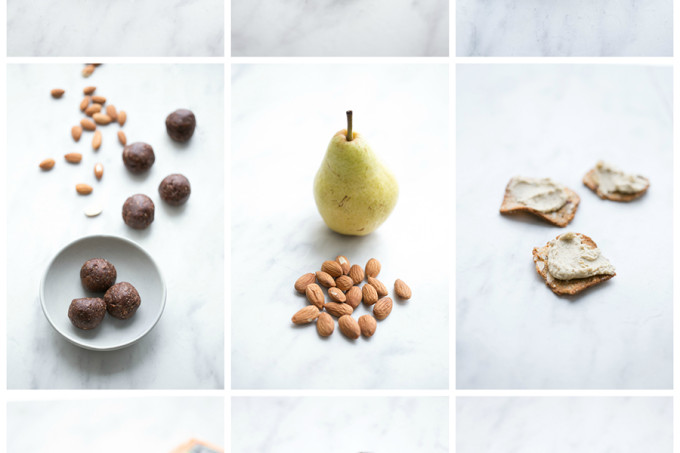
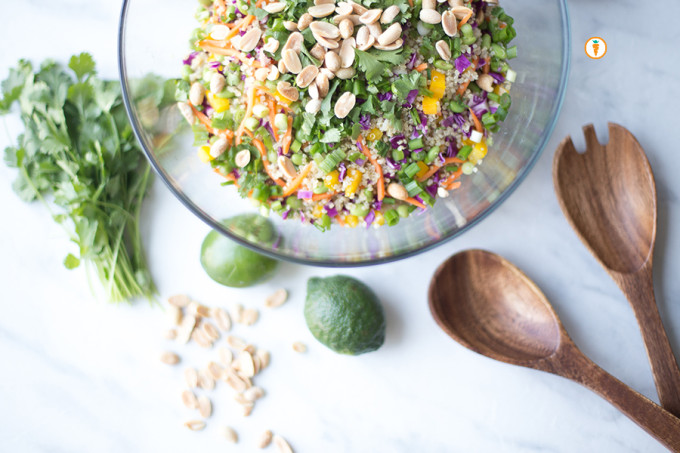
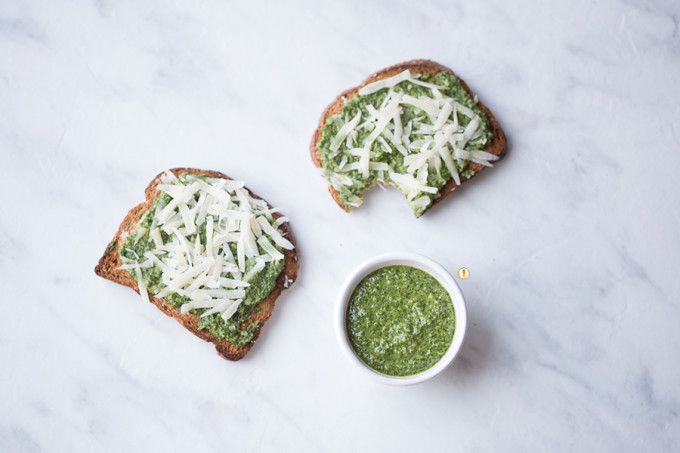
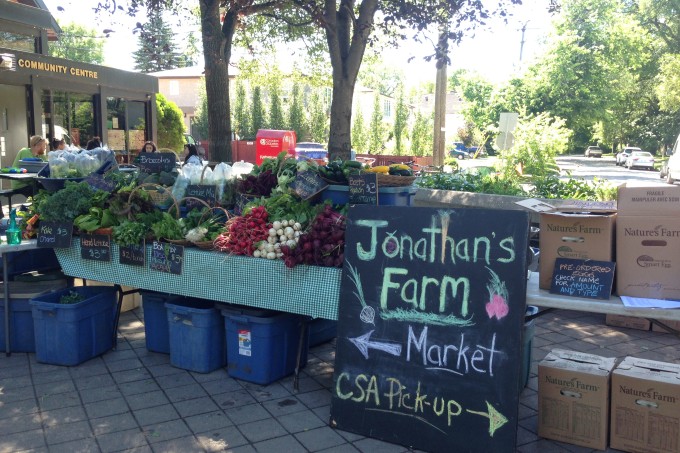

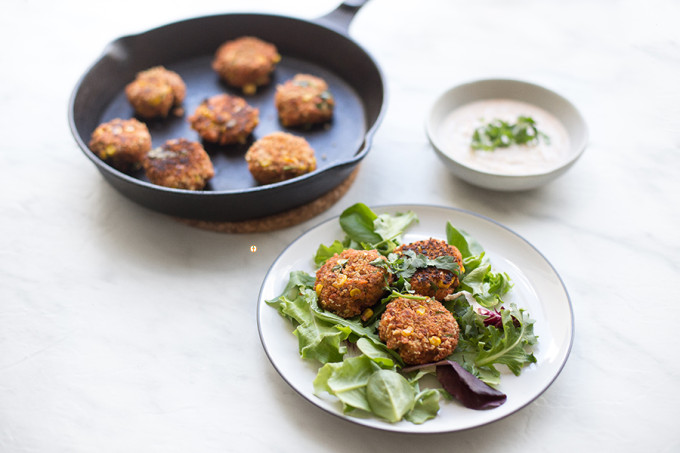
i love pulses in general..so excited that they are the highlight this year. i do have couple recipes coming up
I couldn’t resist commenting. Very well written!